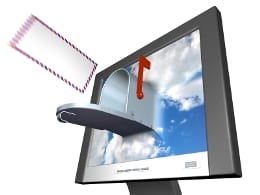 In my Lotus days, CDM was lingo for “career-damaging move” and sparked endless humorous office literature about this or that mistake costing dearly to its author.
In my Lotus days, CDM was lingo for “career-damaging move” and sparked endless humorous office literature about this or that mistake costing dearly to its author.
We all have had more years of experience using email than any other computer application, so in a way, we’re all experts. It’s therefore remarkable how easy it is for many of us to inadvertently make major mistakes when using such a familiar instrument.
CBS Money Watch recently featured a rather boisterously titled article — “5 career-destroying email blunders” — offering these insights:
- Never resolve an email alias in a message about that individual. Here is the scenario: You’re writing a scathing email about Emily to your manager or a co-worker. You’re curious who Emily’s manager is, so you enter her name in the CC field to check out her details in Outlook. Unfortunately, you forget to erase her before sending — and congratulations — you’ve just sent the damaging email to her.
- Don’t BCC without good reason. You probably know that when you enter an addressee in the BCC field of an email, that person gets the message, but everyone in the To and CC lines is unaware. Hence, the “blind” in BCC. The problems start when you use the BCC field as a way to mask recipients so they can see messages that it’s not polite or ethical to share. For example: BCC’ing someone on a disciplinary e-mail. Just imagine what happens if the BCC recipient accidentally clicks Reply All or forwards the message to someone else. The charade is over, and the damage could be irreparable.
- Don’t send an emotional mail before counting to 100. Something upsetting happens, so you fire off an acidic email that lets a co-worker know exactly what you think of him. Or perhaps not so damaging, you just reply to an email with a sarcastic or condescending tone. Before you click Send, ask yourself what you hope to achieve — and will it have the desired impact? Waiting a half hour and re-reading the message might make you realize there’s no reason to send it — delete the message and be the better man or woman.
- Spell-check, always. Are you that person who sends email riddled with typos? It looks unprofessional, and contributes to people thinking of you as sloppy and impulsive.
- Don’t use smug signature blurbs. Signatures that say things like “sent from my iPhone” might seem innocuous, but they can have unintended consequences. You might be trying to say, “I’m writing this on the go, so the message will be short and might have a few typos in it,” but the signature can come off as snobbish, and possibly even poison relationships with partners or clients who might have adversarial relationships with your phone manufacturer.
While a couple made me shudder at how familiar they sounded, I am not sure I agree with the sigfile thing, although I try to always check mine for appropriateness before hitting Send.
If I were to add my own words of wisdom, however, they would be more on the “do’s” and less on the “don’ts.”
Gianni’s List of Email Do’s
- Email can drag you into believing you are having a private conversation. Nothing is further from the truth. Especially when the content is controversial, I have learned to ask myself “What if this email is forwarded to the worst possible person?” Try it and see how heavily you will edit your text!
- I do not trust spell-checkers, so I ALWAYS re-read my emails for typos. I hate the feeling of inaccuracy driven by typos.
- Again, especially so when the content is controversial, people (and I am no exception) can get into prolonged and inarticulate rants who are hard to follow. Any email longer than the typical one pager may discourage the reader from applying the appropriate concentration and focus. Rereading with a brevity objective in mind usually delivers for me significant improvements.
- I write most of my email in English, but English is NOT my first language. The use of language is always therefore for me an intellectual rather than instinctual exercise, and I find that I may be influenced by the last bits of prose I happened to read. Another objective of a reread of an important email is therefore the elimination of inadvertent language biases.
Any tips to add to these lists?


